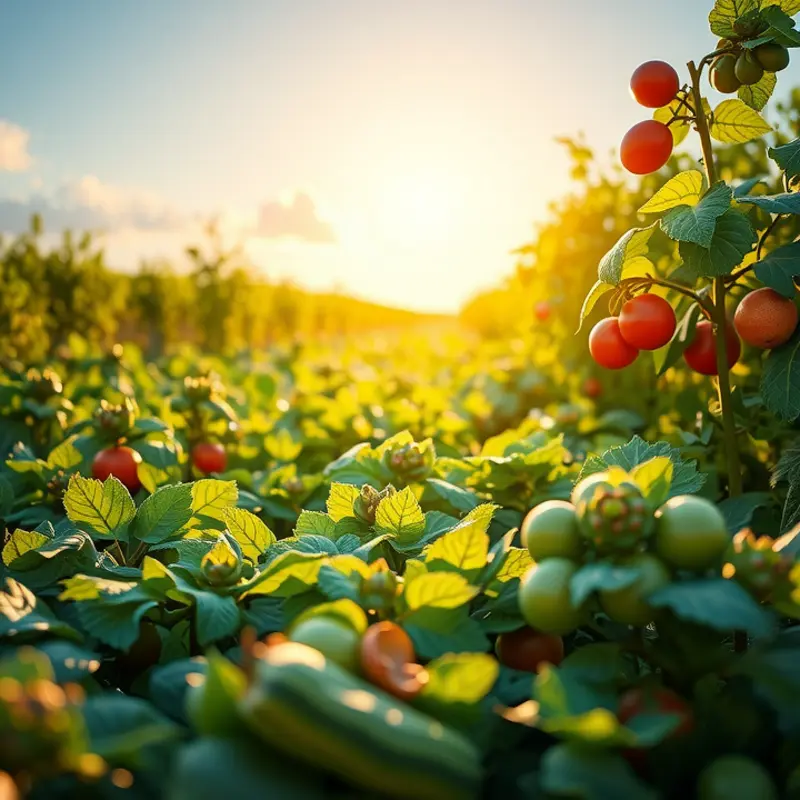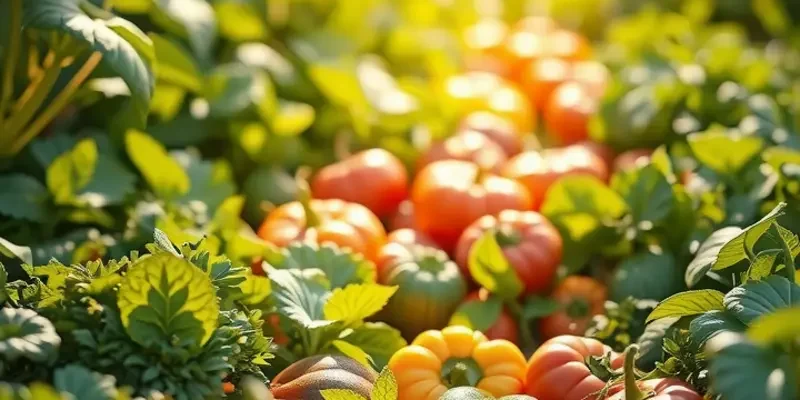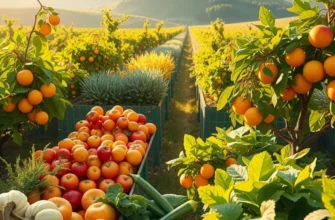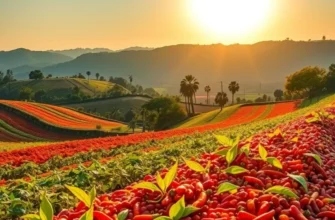Cultural traditions around food preservation reveal not just practical methods but also stories of community, survival, and celebration. Across the globe, unique techniques have developed, deeply intertwined with local ingredients and history. From fermented delights to sun-dried treasures, exploring these methods opens a window into the past while connecting us to the present culinary landscape. Join us on a journey through vibrant food cultures that honor the practice of preserving nature’s bounty.
The Fermentation Phenomenon: A Global Journey

Fermentation, one of the earliest forms of food preservation, transforms ingredients into culinary masterpieces around the world. This ancient method not only enhances flavors and textures but also boosts nutritional value, providing a unique intersection of tradition and health.
In Korea, the essence of fermentation is embodied in kimchi, a spicy, pickled vegetable dish that traces back centuries. Kimchi, primarily made of napa cabbage and radishes, is seasoned with a vibrant mix of chili powder, garlic, ginger, and fish sauce. The fermentation process doesn’t only preserve the vegetables but also cultivates beneficial probiotics, which are essential for gut health. This dish, often a staple at Korean meals, fosters community as families come together during the “kimjang” process to prepare large batches for communal sharing. Kimchi’s robust flavors are a testament to Korea’s culinary identity and highlight the cultural importance of cooperation and preservation.
Germany’s culinary landscape offers sauerkraut, a tangy fermented cabbage that plays a prominent role in numerous traditional dishes. Sauerkraut, deriving its texture from lactic acid fermentation, has been consumed in European kitchens for hundreds of years. Its creation involves slicing cabbage and layering it with salt, where the cabbage’s natural bacteria ferment the sugars. This method not only retains the cabbage’s crispness but also amplifies its nutritional profile by providing vitamin C and other essential vitamins. In Germany, sauerkraut is not just food; it represents a rich gastronomical heritage cherished at homes and festivals.
Japan presents miso, an essential seasoning crafted from soybeans, barley, or rice, fermented with koji—a mold culture. Miso’s journey of fermentation can last anywhere from weeks to years, with deeper, more complex flavors developing over time. Used commonly in soups and marinades, miso offers a umami depth that enriches a variety of dishes. Its fermentation process generates an array of beneficial enzymes, amino acids, and minerals, contributing to its status as a staple in Japanese diets. The crafting of miso is steeped in tradition, reflecting a balance between culinary art and mindful nutrition—a testament to Japan’s dedication to thoughtful eating.
The science behind fermentation revolves around the transformation of sugars into acids, gases, or alcohol using microorganisms such as bacteria and yeast. This process not only safeguards food but can also diminish antinutrients and synthesize novel compounds that enrich flavors and textures. The fusion of science and tradition observed in fermented foods like those mentioned above reveals the significant cultural embrace of these techniques across different societies.
Fermentation is more than just a method of preservation—it’s a cultural bridge that connects people across time and geography. Each region’s take on fermentation underscores a shared global narrative of community, resilience, and innovation. For those interested in integrating fermented foods into modern diets, exploring alternatives to traditional ingredients, such as non-dairy probiotics, can be an enlightening journey. Consider exploring non-dairy probiotics guide for guidance on diversifying your sources of beneficial bacteria in your diet.
From Sun-Dried to Smoked: Unique Preservation Techniques

Amidst the plethora of food preservation methods, sun-drying stands as a testament to the ingenuity of Mediterranean cultures. This process, which involves laying fruits, such as tomatoes, in direct sunlight, concentrates flavors and enhances texture. The sun-dried tomato, rich in umami, is a beloved ingredient in many culinary traditions. The arid climate of regions like Southern Italy naturally lends itself to this method, allowing the sun’s rays to efficiently draw out moisture from the fruit.
In the sun-drying process, ripened tomatoes are sliced and arranged on wood slats, allowing for optimum air circulation. The slats are positioned under direct sunlight, sometimes atop rooftops, where air currents assist in the drying process. The result is a product with enduring shelf life and intensified taste, finding its way into myriad recipes, from pasta sauces to bold salads. This reflects a culture that adeptly adapts to its environment, using what is naturally available.
On the other side of the globe, indigenous peoples of North America have mastered the art of smoking fish. This age-old technique not only preserves but imparts a deep smoky flavor to the fish, particularly salmon. Smoking involves hanging fish over a smoldering fire of hardwoods, such as alder or hickory, which slowly cooks and infuses the meat. This method was crucial for sustenance, enabling communities to prepare for harsh winters by preserving their summer catch.
The smoking process varies among tribes, often involving a blend of both hot and cold smoking techniques. Hot smoking cooks the fish, providing immediate edibility, while cold smoking preserves, allowing storage for months. This dual approach catered to both immediate consumption and long-term needs, showcasing a balance between necessity and flavor. Such techniques cannot be wholly separated from the stories and culture they stem from, often being passed orally across generations.
The practice of drying and smoking highlights human adaptability. It’s an intersection where climate and cuisine converge, creating dishes profoundly rooted in their origins. Just as the dried tomatoes rely on the Mediterranean climate, smoked salmon finds its identity in the traditions of its indigenous cultivators. These methods illuminate how preservation is much more than an act of extending shelf life; it is a narrative intertwined with cultural identity, highlighting interplay between humans and their environment.
Intriguingly, these preservation techniques overlap with contemporary interests in eco-smart kitchen storage, reflecting a growing awareness of sustainable food practices. As we delve into these age-old techniques, we remind ourselves of the necessity to adapt, whether through ancient or modern means, thus ensuring continuity of tradition and sustainability.
Final words
The cultural aspects of food preservation bring together heritage, innovation, and sustenance in a beautiful tapestry of flavors and techniques. Whether through fermentation or drying, these methods enhance not only the taste but also the stories that link generations. As food enthusiasts and culturally curious individuals rediscover these practices, they are not merely learning how to extend shelf life but are also connecting with communities around the world. Embracing these traditions enriches our culinary experience and fosters a deeper appreciation for the diverse methods that allow us to enjoy the bounty of nature year-round.








